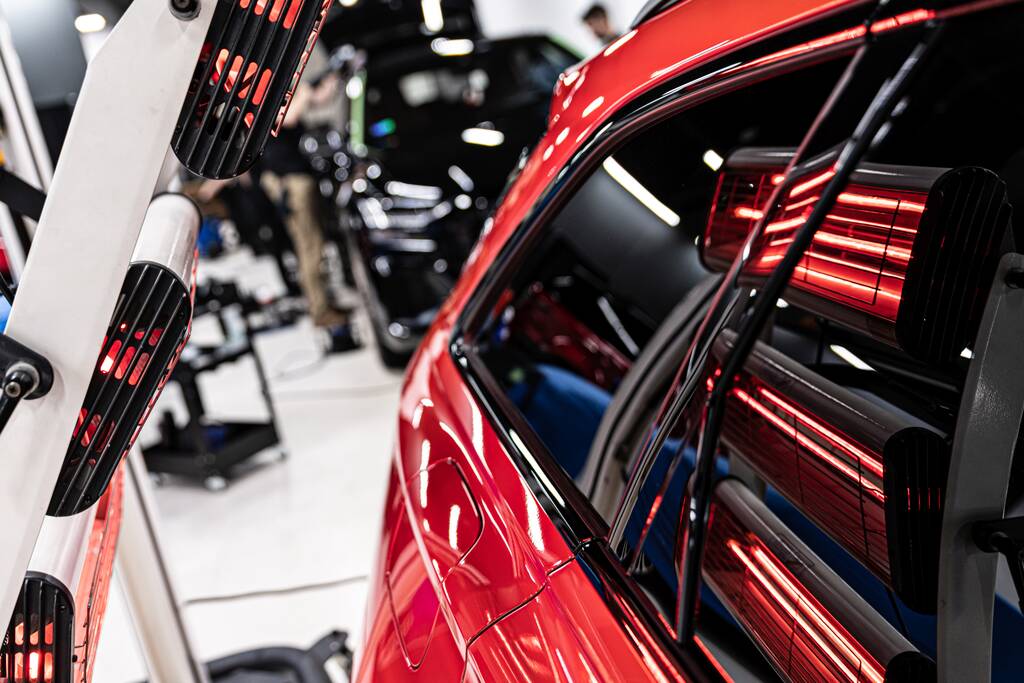In the world of automotive care, new technologies and products continuously emerge, promising better protection and enhanced aesthetics for vehicles. One of the most groundbreaking innovations in recent years is graphene coating. Touted as a superior alternative to traditional coatings, graphene coating has captured the attention of car enthusiasts and professionals alike. But what exactly is graphene coating, and how does it protect your vehicle? This blog delves into the scientific principles behind graphene coating and explores how it provides exceptional protection against scratches, UV rays, and contaminants.
What is Graphene?
Graphene is a single layer of carbon atoms arranged in a two-dimensional honeycomb lattice. It is known for its remarkable properties, including its strength, flexibility, and conductivity. Discovered in 2004, graphene is the thinnest and strongest material known to man, with a tensile strength 200 times greater than steel. Its unique characteristics make it an ideal candidate for various applications, including electronics, medical devices, and now, automotive coatings.
Graphene Coating: An Overview
Graphene coating is a liquid product that, when applied to a vehicle’s surface, forms a durable, protective layer. This layer leverages the extraordinary properties of graphene to offer superior protection compared to traditional coatings like waxes and ceramic coatings. Graphene coatings are typically infused with graphene oxide, a derivative of graphene that retains its remarkable properties while being easier to handle and apply.
The Science Behind Graphene Coating
Chemical Bonding and Surface Adherence
Graphene coatings form strong covalent bonds with the vehicle’s paint surface. This chemical bonding ensures that the coating adheres firmly to the surface, providing a durable and long-lasting protective layer. The covalent bonds are much stronger than the physical bonds formed by traditional waxes and sealants, which means that graphene coatings are less likely to degrade over time.
Hydrophobic Properties
One of the most notable properties of graphene coatings is their hydrophobic nature. Hydrophobic materials repel water, causing it to bead up and roll off the surface. This characteristic is due to the low surface energy of graphene, which prevents water molecules from spreading out on the surface. As a result, graphene coatings help keep the vehicle’s surface clean by preventing water spots, dirt, and contaminants from adhering to the paint.
Thermal Conductivity and Heat Dissipation
Graphene is an excellent conductor of heat, which means it can dissipate heat more effectively than other materials. When applied as a coating, graphene helps reduce the heat absorbed by the vehicle’s surface, minimizing the risk of thermal damage. This property is particularly beneficial for vehicles exposed to high temperatures and intense sunlight, as it helps protect the paint from UV damage and oxidation.
Scratch Resistance
Graphene’s incredible strength contributes to its scratch-resistant properties. The honeycomb lattice structure of graphene provides a hard, durable surface that can withstand minor abrasions and scratches. When applied to a vehicle, graphene coating forms a protective barrier that shields the paint from everyday wear and tear, such as road debris, tree branches, and accidental contact.
UV Protection
UV radiation from the sun can cause significant damage to a vehicle’s paint over time, leading to fading, discoloration, and oxidation. Graphene coatings offer superior UV protection by absorbing and dissipating UV rays, preventing them from penetrating the paint surface. This UV resistance helps maintain the vehicle’s original color and shine, prolonging the lifespan of the paint.
Chemical Resistance
Graphene coatings are highly resistant to chemicals and environmental contaminants. The strong covalent bonds formed by graphene molecules create a dense, impermeable layer that protects the vehicle’s surface from chemical reactions and corrosion. This resistance is particularly useful in urban environments where vehicles are exposed to pollutants, acid rain, and industrial fallout.
Benefits of Graphene Coating for Your Vehicle
Long-Lasting Protection
Thanks to its strong chemical bonding and durability, graphene coating provides long-lasting protection for your vehicle’s paint. Unlike traditional waxes that need to be reapplied frequently, graphene coatings can last for years with proper maintenance, saving you time and effort in the long run.
Enhanced Gloss and Shine
Graphene coatings enhance the gloss and shine of your vehicle’s paint, giving it a sleek, showroom-like appearance. The smooth, hydrophobic surface created by the coating reflects light more effectively, making the paint look deeper and more vibrant.
Easy Maintenance
The hydrophobic properties of graphene coatings make it easier to maintain a clean vehicle. Water, dirt, and contaminants are less likely to adhere to the surface, meaning that regular washes are more effective and less frequent. Additionally, the coating’s chemical resistance ensures that harsh cleaning agents won’t damage the paint.
Cost-Effective Solution
While the initial cost of graphene coating may be higher than traditional waxes or sealants, its long-lasting protection and reduced maintenance needs make it a cost-effective solution in the long run. By protecting your vehicle from damage and preserving its appearance, graphene coating can help maintain its resale value.

Application Process
Applying graphene coating requires careful preparation and precision. Here’s a brief overview of the process:
- Surface Preparation: Thoroughly wash and decontaminate the vehicle’s surface to remove any dirt, grime, and old waxes or sealants. Clay bar treatment may be used to eliminate embedded contaminants.
- Paint Correction: If necessary, perform paint correction to remove any existing scratches, swirl marks, and imperfections. This step ensures a smooth surface for the coating to bond with.
- Application: Apply the graphene coating using a microfiber applicator pad, working in small sections. Allow the coating to bond and cure according to the manufacturer’s instructions.
- Buffing: Once the coating has cured, buff the surface with a clean microfiber towel to remove any residue and enhance the gloss.
- Curing Time: Allow the coating to cure fully before exposing the vehicle to water or harsh conditions. This curing period can vary from a few hours to several days, depending on the product.
Final Thoughts
Graphene coating represents a significant advancement in automotive protection, offering unparalleled durability, hydrophobic properties, scratch resistance, and UV protection. By understanding the science behind graphene coating, car owners can make informed decisions about the best way to protect their vehicles. Whether you choose to apply it yourself or seek professional assistance, investing in graphene coating is a smart choice for maintaining your vehicle’s appearance and value. With its long-lasting benefits and ease of maintenance, graphene coating is poised to become the gold standard in car care.




